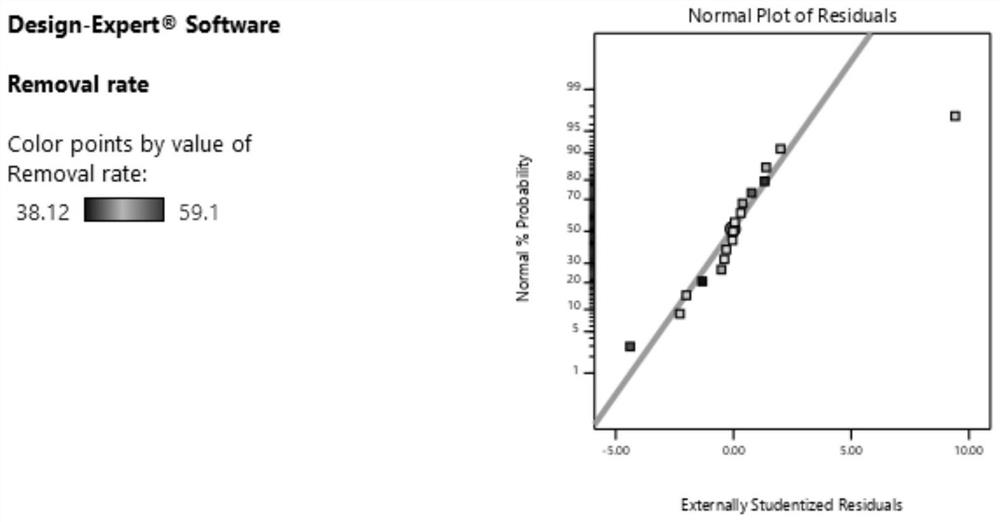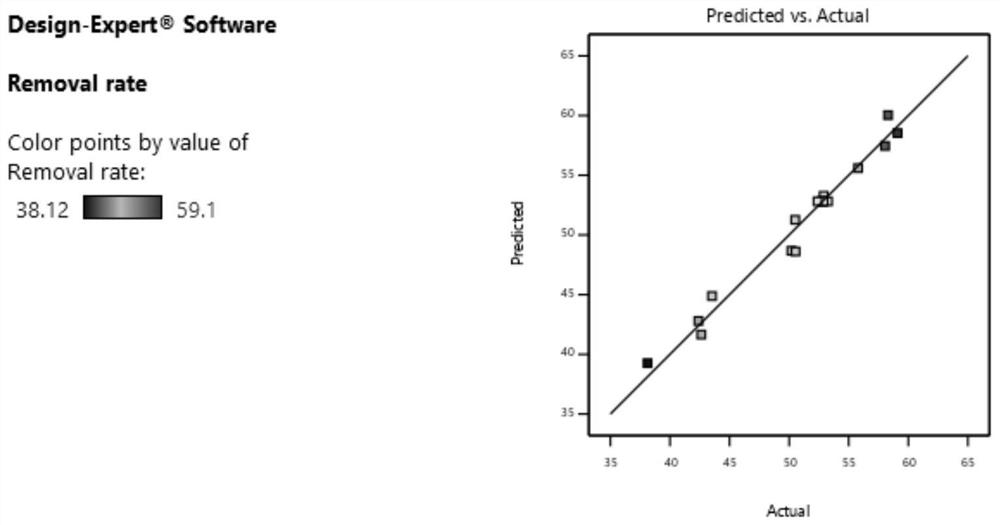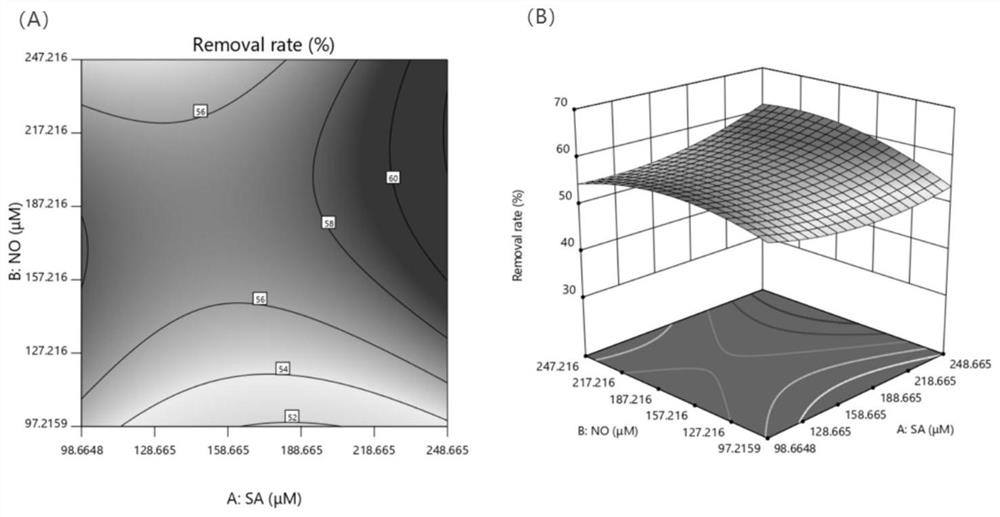Response curved surface-based optimization method for repairing copper-polluted water body by using scindapsus aureus
A response surface and optimization method technology, applied in chemical instruments and methods, water pollutants, biological water/sewage treatment, etc., can solve the problems of insignificant water restoration effect, short plants, and low efficiency of plants absorbing heavy metal copper, etc., to achieve Good environmental benefits and economic benefits, fast growth rate, effects of good environmental benefits
- Summary
- Abstract
- Description
- Claims
- Application Information
AI Technical Summary
Problems solved by technology
Method used
Image
Examples
Embodiment
[0036] (1) An optimization method for remediating copper-polluted water bodies of pothos based on response surfaces, the method is as follows:
[0037] 1) Take the potted pothos out of the soil culture, rinse the roots with deionized water for more than 3 times, put them in water and cultivate them for 7 days, take the fresh weight of pothos 12g / plant as the screening condition, and select 5 plants of pothos with the same growth As a group, they were cultured in glass pots filled with 500mL 1 / 500 modified Hoagland nutrient solution, and the pots were placed randomly. Place them to avoid errors caused by environmental differences. After continuing to cultivate for 14 days, the roots are used for stress experiments after being domesticated by hydroponics;
[0038] 2) Copper stress is based on CuSO 4 ·5H 2 O (analytical pure) aqueous solution is added, the copper concentration is set to 400mg / L, salicylic acid is added in the form of salicylic acid (analytical pure) aqueous so...
PUM
 Login to View More
Login to View More Abstract
Description
Claims
Application Information
 Login to View More
Login to View More - R&D
- Intellectual Property
- Life Sciences
- Materials
- Tech Scout
- Unparalleled Data Quality
- Higher Quality Content
- 60% Fewer Hallucinations
Browse by: Latest US Patents, China's latest patents, Technical Efficacy Thesaurus, Application Domain, Technology Topic, Popular Technical Reports.
© 2025 PatSnap. All rights reserved.Legal|Privacy policy|Modern Slavery Act Transparency Statement|Sitemap|About US| Contact US: help@patsnap.com



